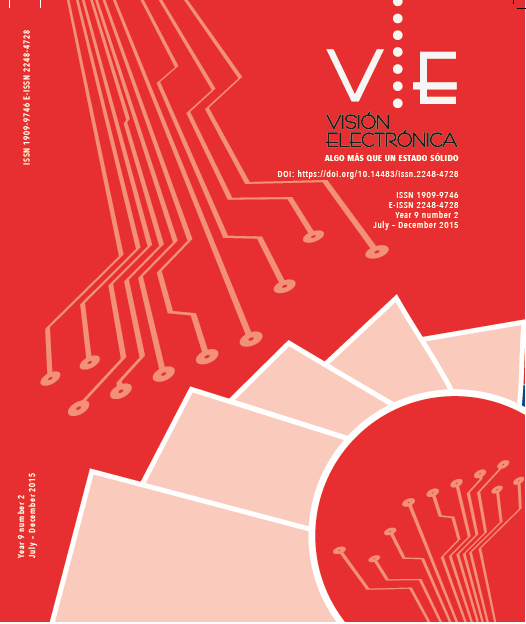DOI:
https://doi.org/10.14483/22484728.11032Publicado:
2015-12-31Número:
Vol. 9 Núm. 2 (2015)Sección:
Visión de CasoComunicación encubierta de imágenes a escala de grises en imágenes a color
Covert communication of grayscale images within color images
Palabras clave:
covert communication, color image, grayscale image, quality assessment, transparency (en).Palabras clave:
comunicación encubierta, imagen a color, imagen a escala de grises, medición de calidad, transparencia (es).Descargas
Resumen (es)
En este documento se presenta un esquema de comunicación encubierta de imágenes en escala de grises ocultas en imágenes a color. El criterio principal en el diseño del esquema es la transparencia de la imagen encubierta, lo que significa que la imagen final (stego) es altamente similar a la imagen de color original, tanto a nivel visual como a nivel estadístico. Se realizan pruebas para medir la transparencia y la calidad de la imagen a escala de grises recuperada en el receptor.
Resumen (en)
This manuscript shows a proposal of covert communication of grayscale images into color images. The main parameter taken into account in the design of the scheme is the transparency of the covert image; meaning that the covert image should be highly similar (perceptually and statistically) to the original color image. Several tests were conducted in order to measure both the transparency of the covert image and the quality of the recovered secret image (i.e. gray image)
Referencias
. C.-K. Chan and L.M. Cheng, “Hiding data in images by simple LSB substitution,” Pattern Recognition, vol. 37, No. 3, 2004, pp. 469-474; [online] Available: http://dx.doi.org/10.1016/j.patcog.2003.08.007.
. H.R. Kanan and B. Nazeri, “A novel image steganography scheme with high embedding capacity and tunable visual image quality based on a genetic algorithm,” Expert Systems with Applications, vol. 41, no. 14, 2014, pp. 6123-6130; [online] Available: http://dx.doi.org/10.1016/j.eswa.2014.04.022.
. X. Liao, et al., “A steganographic method for digital images with four-pixel differencing and modified LSB substitution,” Journal of Visual Communication and Image Representation, vol. 22, no. 1, 2011, pp. 1-8; [online] Available: http://dx.doi.org/10.1016/j.jvcir.2010.08.007.
. R.-Z. Wang, et al., “Image hiding by optimal LSB substitution and genetic algorithm,” Pattern Recognition, vol. 34, no. 3, 2001, pp. 671-683; [online] Available: http://dx.doi.org/10.1016/S0031-3203(00)00015-7.
. C. Agarwal, et al., “Optimized gray-scale image watermarking using DWT–SVD and Firefly Algorithm,” Expert Systems with Applications, [online] Available: http://dx.doi.org/10.1016/j.eswa.2014.06.011.
. M.-R. Keyvanpour and F. Merrikh-Bayat, “Robust dynamic block-based image watermarking in DWT domain,” Procedia Computer Science, vol. 3, no. 0, 2011, pp. 238-242; [online] Available: http://dx.doi.org/10.1016/j.procs.2010.12.040.
. S.-H. Lee, “DWT based coding DNA watermarking for DNA copyright protection,” Information Sciences, vol. 273, no. 0, 2014, pp. 263-286; [online] Available: http://dx.doi.org/10.1016/j.ins.2014.03.039.
. L. Tong and Z.-d. Qiu, “A DWT-based color image steganography scheme,” Proc. Signal Processing, 2002 6th International Conference on, 2002, pp. 1568-1571 vol.1562.


.png)




.jpg)





